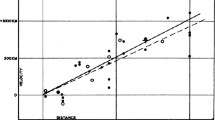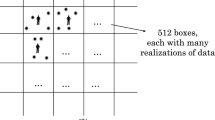Abstract
An exact determination of the Hubble constant remains one of key problems in cosmology for almost a century. However, its modern values derived by various methods still disagree from each other by almost 10%, larger values being obtained by measurements at relatively small distances (e.g., by Cepheid stars as standard candles), while smaller values are characteristic of the methods associated with huge spatial scales (e.g., from the analysis of cosmic microwave background fluctuations). A reasonable way to resolve this puzzle is to assume that the Hubble constant is inherently scale-dependent. This idea seems to be particularly attractive in the light of the latest observational results on the early-type galaxies, where dark matter halos are almost absent. Therefore, an average contribution of the irregularly distributed dark matter to the rate of the cosmological expansion should be substantially different at various spatial scales. As follows from rough estimates, the corresponding variation of the Hubble constant can be about 10% and even more, which well explains the spread in its values obtained by different methods.
Similar content being viewed by others
References
B. Ryden, “A constant conflict,” Nature Physics 13, 314 (2017).
A. G. Riess et al., “A 2.4% determination of the local value of the Hubble constant,” Astrophys. J. 826, 56 (2016).
N. Aghanim et al. (Planck Collaboration), “Planck intermediate results: XLVI. Reduction of large-scale systematic effects in HFI polarization maps and estimation of the reionization optical depth,” Astron. Astrophys. 596, A107 (2016).
Q.-G. Huang and K. Wang, “How the dark energy can reconcile Planck with local determination of the Hubble constant,” Eur. Phys. J. C 76, 506 (2016).
A. D. Linde, “The Inflationary Universe,” Rep. Prog. Phys. 47, 925 (1984).
K. A. Olive and J. A. Peacock, “Big-Bang cosmology,” in: C. Patrignani, et al. (Particle Data Group), Review of Particle Physics, Chinese Physics C 40, 100001 (2016), p. 355.
J. Liu, X. Chen, and X. Ji, “Current status of direct dark matter detection experiments,” Nature Physics 13, 212 (2017).
O. Buchmueller, C. Doglioni, and L.-T. Wang, “Search for dark matter at colliders,” Nature Physics 13, 217 (2017).
M. Swinbank, “Distant galaxies lack dark matter,” Nature 543, 318 (2017).
R. Genzel et al., “Strongly baryon-dominated disk galaxies at the peak of galaxy formation ten billion years ago,” Nature 543, 397 (2017).
O. Lahav and A. R. Liddle, “The cosmological parameters,” in: C. Patrignani et al. (Particle Data Group), Review of Particle Physics, Chinese Physics C 40, 100001 (2016), p. 386.
M. Křízěk and L. Somer, “Excessive extrapolations in cosmology,” Grav. Cosmol. 22, 270 (2016).
Author information
Authors and Affiliations
Corresponding author
Rights and permissions
About this article
Cite this article
Dumin, Y.V. Is the Hubble Constant Scale-Dependent?. Gravit. Cosmol. 24, 171–172 (2018). https://doi.org/10.1134/S0202289318020068
Received:
Published:
Issue Date:
DOI: https://doi.org/10.1134/S0202289318020068




